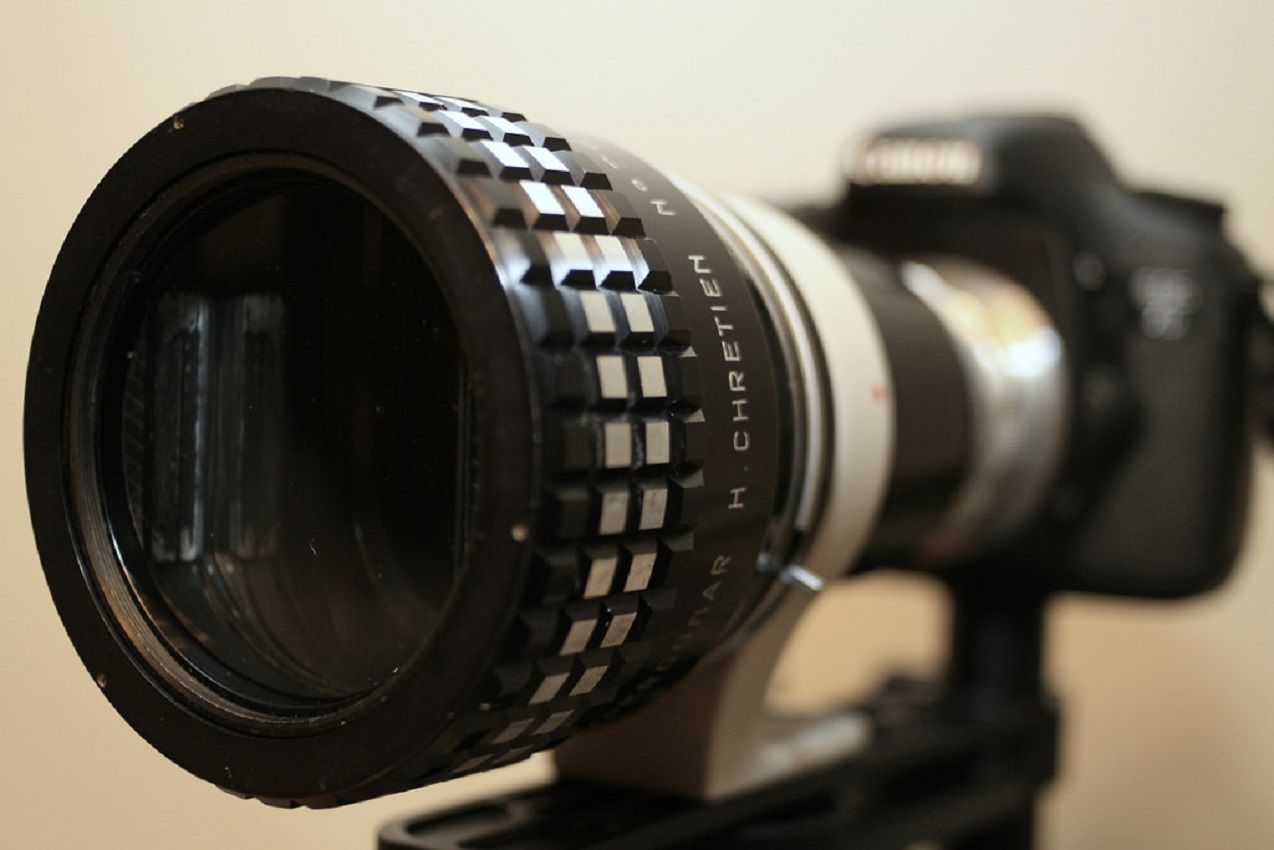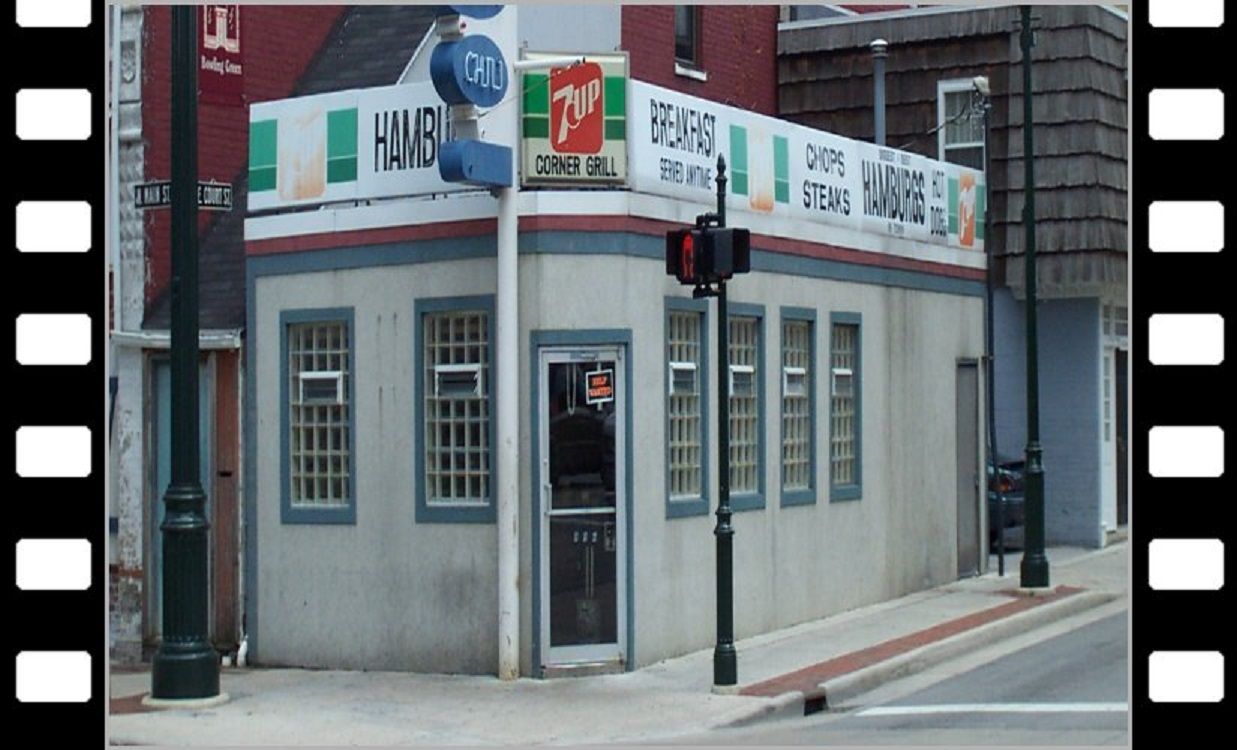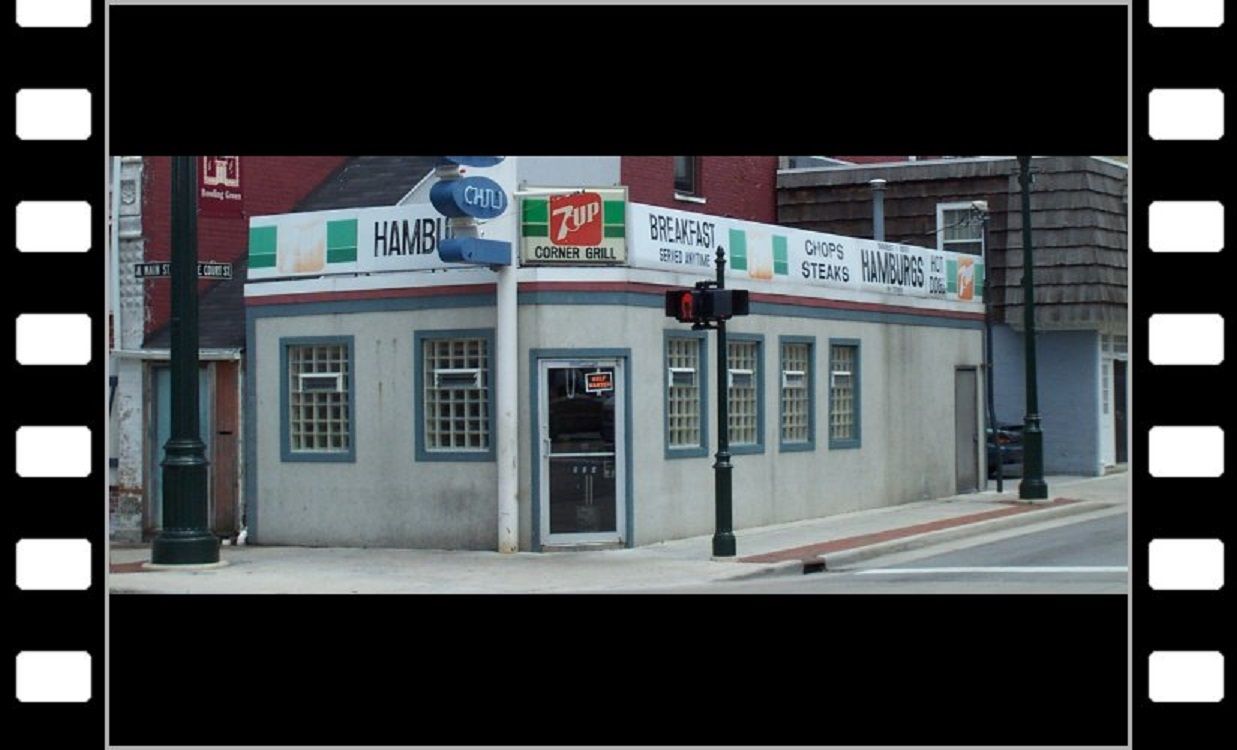Anamorphic lenses are a classic mainstay in a filmmaker’s kit. They offer a unique, ultra-wide-angle perspective that suits cinema perfectly. But there are pros and cons to the use of anamorphic lenses, too.
This article will discuss the technical details of anamorphic lenses, including how they acquire their wide-angle image—and how they differ from the more common spherical lenses.
The History of Anamorphic Lenses

“Anamorphic” refers to a distorted projection of an image that appears normal when viewed from a specific point or with a particular mirror or lens. The word “anamorphic” originates with the Greek anamophoun, meaning “to transform.”
The anamorphic lens was invented in World War I to allow tank drivers to have a wider view of the battleground without expanding the viewing hole. Then, in the 1950s, anamorphic lenses were used to create the current letterbox format of cinema (instead of the traditional 4:3 format of then TV sets).
Anamorphic lenses come in a range of aspect ratios and offer several optical qualities that separate them from other (normally spherical) lenses, which we’ll cover below.
How Do Anamorphic Lenses Differ From Spherical Lenses
Spherical lenses (the usual type) take in light from everywhere equally. They are designed to produce the least distortion possible, especially toward the center of the image. Basically, they capture an image with equal proportions up to down and left to right.
When capturing widescreen on a non-anamorphic lens, the full width of the sensor is utilized but not the full height (as traditional 35 mm film/sensors have an aspect ratio of 3:2. This means that the top and bottom of the image have to be cropped out to achieve a wide-angle perspective.
An anamorphic lens, on the other hand, captures a much more elongated horizontal field. But for this to work, the lens has to “squeeze” the image to fit onto the camera’s sensor. This “squeezing” enables the camera to capture a wider aspect ratio (usually 2.39:1).

Because the image is so distorted, it needs to be corrected to appear normal once more. Traditionally, this was done with a complementary lens that shrinks the image vertically to return it to normal proportions for viewing. Nowadays, software like Adobe Photoshop handles the de-squeezing.

One notable difference between anamorphic and spherical lenses is the image quality. Because the anamorphic lens utilizes all of the sensor and film space, more detail can be captured. This means no film or pixel count is wasted when capturing an image.
Another difference is that because an anamorphic lens requires more elements within the lens, they’re generally larger and have some technical drawbacks compared to spherical lenses. Firstly, they’re generally harder to focus on, especially at closer distances. This means that sometimes, a diopter needs to be used.
Furthermore, anamorphic lenses are notoriously soft at open apertures and need to be stopped down to be sharp. This means that more light is necessary for an anamorphic lens than a spherical lens to achieve the same shot.
Optical Characteristics of Anamorphic Lenses
When using different kinds of lenses, image quality, bokeh, and optical artifacts can differ hugely. This is true for anamorphic lenses too. Below, we cover some of the common differences with anamorphic lenses.
Elliptical Bokeh

Bokeh is the quality of out-of-focus regions in an image and is one of the major things that cinematographers and photographers alike consider when choosing a lens.
Spherical lenses will show out-of-focus highlights as circles, whereas an anamorphic lens will show them as vertical ovals. This occurs because an anamorphic lens compresses the image horizontally, squeezing the circles.
Horizontal Lens Flare

Another artifact with anamorphic lenses is that an anamorphic lens will typically show a lens flare with a long blue-tinted horizontal line across the image when there is a bright light in the image.
This is a common characteristic of anamorphic lenses, which has found a niche in film due to its artistic quality.
Anamorphic Mumps
More of an issue in older anamorphic systems is that because the horizontal image compression isn’t uniform, objects to the center of the image can appear wider than objects to the outsides of the image.
This was called “anamorphic mumps” because an actor’s face in the center of the screen could look as if they had the mumps.
Shallower Depth of Field
Anamorphic power (or the strength of the anamorphic lens) refers to how much the lens squeezes the image horizontally in proportion to the vertical length. Because of this squeezing, an anamorphic lens can appear to have a much shallower depth of field at equal focal lengths to spherical lenses.
The effective focal length of an anamorphic lens is its actual focal length divided by its anamorphic power. If the lens has a power of 1.33x and a focal length of 100mm, the effective focal length will be around 75mm. This gives the appearance of a shallower depth of field at the same focal length and aperture.
Anamorphic Lenses Versus Spherical Lenses: A Summary
Choosing between two different kinds of lenses comes out to a bunch of factors, including the budget, style, technical details, and desired outcome. But here’s a summary of the technical differences between anamorphic lenses and spherical lenses.
Anamorphic lenses:
- More cinematic and artistic.
- Softer feel to image quality (due to more distortion).
- Oval/elliptical bokeh.
- Horizontal (and blueish) lens flares.
- An appearance of shallower depth of field.
- Distorted image.
- Difficult to focus.
- Smaller aperture (slower lens).
- Can achieve full use of sensor/film (full width and height).
- More expensive and fewer lens choices.
Spherical lenses:
- More realistic look.
- No lens flares (or normal lens flares).
- Normal depth of field.
- No distortion.
- Sharper image (fewer lens elements for light to pass through).
- Larger apertures (faster lens).
- Easier to focus.
- If shooting for widescreen, you can only utilize the full width of sensor/film and not height.
- Less expensive and far more lens options.
Is Anamorphic Worth It?
This question depends entirely on what you want to achieve with the lens. If you’re looking to shoot still photography or you’re an aspiring cinematographer, take a look at what either choice (and individual lenses) look like. An anamorphic lens can give a really special look and add a great atmosphere to a film.
But, anamorphic lenses are typically much harder to use and require a better understanding of your camera and lens. On the other hand, spherical lenses are abundant and cheap—and can take a more realistic-looking image.
Keep in mind that you’ll have to learn how to de-squeeze your image if you choose to go with an anamorphic lens!

0 Comments